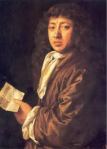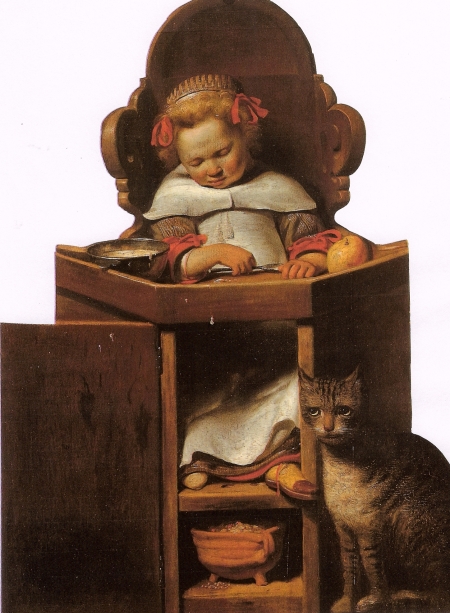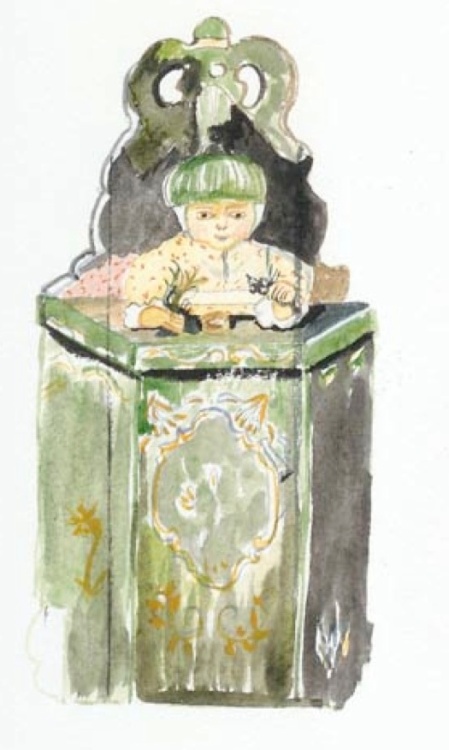I have not been idle with my dummy board research over the past few weeks despite my relative quietude in the blogosphere.
I picked up the biggest book I think I have ever lugged home from the library, a few weeks back. I ordered it especially, as it was entitled “Deceptions and Illusions – Four centuries of trompe l’oeil” the catalogue of the exhibition at the National Gallery of Art Washington. U.S. A. I thought it might prove a useful tool in my ever present and ongoing search for information about the dummy board figure.
Tool indeed… if I had needed it as a weapon it would have made a nasty dent in someone’s cranium. As it was, it made a large enough thump as it fell off the desk ( onto a wooden floor!) narrowly missing my foot, when I was searching the bibliography, yesterday.
I heaved it back to the library today and asked them NOT to provide me with such huge tomes in future. For the good of my health. 🙂
They laughed.
They’re used to me after twelve, nearly thirteen years of asking for such esoteric and arcane titles as ” Visual Perception Redefined ” a scholarly paper in the psychological appreciation of reality and “The history of the dildo from the 17th century to the present day ” I kid you not!
And all because of a tiny reference in a yet another scholarly tome ( this time in Italian- well yes it would be… ) to a trompe l’oeil of one such an * object*.
Isn’t life strange?
What’s that…? Do I have pictures….No, I most certainly do not.
Back to the big book….. It took an age to read properly. It was very useful. Not to mention interesting. Wordy in the extreme but interesting. I don’t know why authors seem to think they have to be so convoluted when explaining psychological phenomena…but they do. What’s wrong with plain English?
I do hope my little blog is less frightening than many would find this book. Anyway…I digress.
The book contained, as I hoped it would, an illustration of three historical ” references ” to interesting problems thrown up by reading people’s diaries. THAT is what you get for poking your nose un- asked, into other peoples business! Well I suppose that if they were writing a diary it was meant to be seen eventually, though I’m told Pepys never intended his to be seen and deciphered. Mmm..pull the other one. 😉 These three problems have been perplexing me for a while and I have been trying hard to get to the < ahem> bottom of them. 🙂
Anyway, in his diary he mentions a perspective, a trompe l’oeil deception by Hoogstraten which he saw when visiting his Uncle’s London House, in Lincolns Fields. This consisted of a box like cabinet with a peephole ( No it’s NOT one of those ), which gives the illusion of a three dimensional room should you look into it. This book had an illustration of it. The first I had seen and it cleared up nicely the question of how it was done.
The second reference was from the diary of a customer of Rembrandt’s, about a picture which he had acquired after the Great Man’s death. Girl Leaning on a window Ledge. It doesn’t sound very exciting. Indeed the picture is a bit……well….yes…un- exciting. Here it is.
We are told by Rogier de Piles ( that’s Pee-les..not hemorrhoids)
who eventually bought the painting that:
“Rembrandt diverted himself one day by making a portrait of his servant in order to exhibit it at his window and deceive the eyes of the pedestrians. He succeeded because the deception was only noticed a few days later. It was not beautiful drawing, nor a noble expression which produced this effect. One does not look for these qualities in his work. While in Holland I was curious to see the portrait. I found it painted well and with great strength. I bought it and still exhibit it in an important position in my cabinet”
Could this deception fool the 21st century viewer today? I doubt it but it obviously worked in the 17th century.
This book not only showed me the picture but told me, at last that it now resides in the Dulwich Picture Gallery. I must go and see it if only for its fame in trompe l’oeil lore.
Now we come to my best and last discovery.
A while back I mentioned that I had stumbled upon, quite by accident I have to say; one of those happy happenstances which turn up now and again when you are ploughing through dull, dusty and dry information on your chosen subject, a dummy board which had been attributed to one of the very first makers of the art form, Cornelis Bisschop in the early 17th century. I needed to verify that this was indeed a possibility and that the dummy board was still around. The figure was once owned by a very eminent London antique dealer whose speciality is the 17th century. This book was supposed to contain the information and a photo. We know this, as the very dummy board, it appeared, had been shown as part of this Deceptions and Illusions exhibition in the U.S. I have spoken about this figure before in Every Dog Has its Day.
Hence the rather large and unwieldy book.
Those of you who find this sort of detective work boring….can go and make a cup of tea now….. 🙂
“Young Boy asleep in a high chair” exhibited in Washington, proved, alas, to be by Verspronck { a find in itself as it is the only known foray of this, primarily portrait artist, into the world of dummy boards. }
But oh how like the claimed Bisschop it is. So now I have two young boys in high chairs.
Here are the two side by side.
We do know that these are pictures of boys because of the flat and wide angular collars they are wearing. These were never it’s said, worn by girls. In the second picture the one by Verspronck, the child has lost a shoe. Apparently the artist would never have painted a girl with a missing shoe. No doubt some long gone artistic and social rule. { I do know that the shoe is a euphemism in English folklore, hence all those references in Nursery Rhymes and Fairy Stories to shoes and slippers.} Use your imagination -but if you can’t -and you really want to know what for…you will have to email me off blog!
I love the porridge dripping over the edge of the rail and the cat’s expression, rather world weary don’t you think?
Both these dummy boards are in private collection.
Did I say two?
There is a third for which I have a black and white illustration. This one lives in a museum in Holland. It’s slightly different in that the child wears a distinctive headdresss/hat which is padded so that if the he/she fell on those pristine tiled floors the Dutch had at the time, they wouldn’t hurt themselves. The high chair is also rather grand with a fancy top and painted decoration.
As the photo I have is sadly only in black and white, I painted a water colour to remind me of how it looked. The little lad, ( I say that but this one might be a girl) in this one, is wide awake.
So despite all my work, I’m not really very much further on. I just have one more example.
Ah well…that’s how it is in ‘research’. At least we have established that the dummy board of a child in a high chair is an accepted dummy board pattern. One that is repeated over and over-as many dummy boards are.
I suspect Bisshopp may have been the first one.
I suppose, teacher might give me a silver star…( if only for tackling *The Book *), but on my report they will have written.”must try harder”.
<sigh>







01/09/2010 at 3:27 pm |
[…] to several other sweepers in the post mentioned above and one or two sleeping children ( Must Try Harder). It is no doubt, still happening. It’s usually easy to spot the copies. I’ve spoken […]
06/09/2010 at 12:38 pm |
[…] figure as Rembrandt would have mined the rarefied artistic seam that is the dummy board? See Must try Harder Or that Gainsborough felt it a sufficiently kosher form that he too, had a go at […]